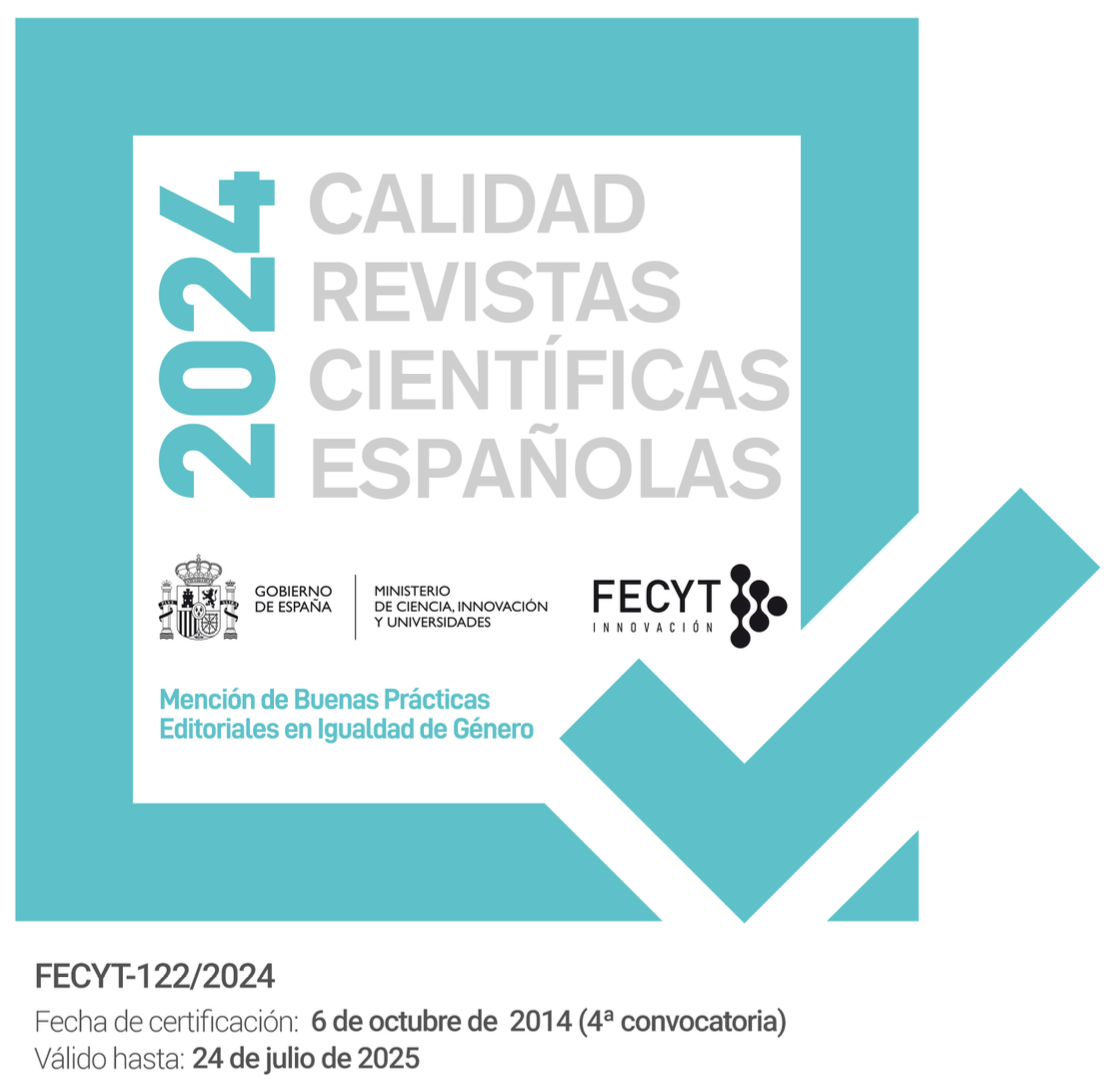Searching for a “Different Kind of Freedom”: Postcoloniality and Postfeminist Subjecthood in Zadie Smith’s NW
Abstract
This paper attempts to open a new line of inquiry into Zadie Smith’s fourth novel NW (2012) by drawing attention to her investment in the contemporary feminine experience. I argue that by bringing women to center stage, NW marks a turning point in Smith’s fiction, while also bearing the hallmarks of the author’s previous work, namely her concern with Britain’s postcolonial legacy and issues of human connection. While Smith’s focus on self-monitoring educated women links the text to a postfeminist paradigm, the fact that these characters, and others, are of immigrant background locates the novel in the terrain of Britain’s postcolonial history and its multicultural present in twenty-first century London. My contention will be that far from adopting a celebratory approach to her postfeminist subjects as harbingers of social change, Smith points at the disabling aspects of this ideology, and the prevalence of racial and gender inequalities, problematizing individualistic notions of failure as self-responsibility.
Keywords: postcolonialism; connectedness; postfeminism; female friendship; bildungsroman; impressionistic narrative
Downloads
References
Atwood, Margaret. 1986. “That Certain Thing Called The Girlfriend.” The New York Times, May 11. [Accessed online on November 11, 2016].
Boes, Tobias. 2006. “Modernist Studies and the Bildungsroman: A Historical Survey of Critical Trends.” Literature Compass 3 (2): 230-243.
Bollen, Christopher. 2014. “Interview: Zadie Smith.” Interview magazine, February 22. [Accessed online on November 11, 2016].
Butler, Judith. 1997. The Pscyhic Life of Power. Theories in Subjection. Palo Alto, CA: Standford UP.
—. 2002. “What is Critique?: An Essay on Foucault’s Virtue.” In The Political, edited by David Ingram, 212-226. London: Wiley-Blackwell.
—. 2010. Frames of War: When is Life Grievable? London: Verso.
Dekoven, Marianne. 1983. A Different Language. Gertrude Stein’s Experimental Writing. Madison, WI: The U of Wisconsin P.
Fernández Carbajal, Alberto. 2016. “On Being Queer and Postcolonial: Reading Zadie Smith’s NW through Virginia Woolf’s Mrs Dalloway.” The Journal of Commonwealth Literature 51 (1): 76-91.
Fortier, Anne-Marie. 2008. Multicultural Horizons: Diversity and the Limits of the Civil Nation. London: Routledge.
Frazer, Elizabeth. 2008. “Mary Wollstonecraft on Politics and Friendship.” Political Studies 56: 237-256.
Harris, Anita. 2003. Future Girl: The Young Woman in the Twenty-First Century. London: Routledge.
Hirsch, Marianne. 1981. “Mothers and Daughters.” Signs. Journal of Women in Culture and Society 7 (1): 200-222.
—. 1989. The Mother/Daughter Plot: Narrative, Psychoanalysis, Feminism. Bloomington and Indianapolis, IN: Indiana UP.
Irigaray, Luce. 1980. “When Our Lips Speak Together.” Signs: Journal of Women in Culture and Society 6 (1): 69-79.
—. (1981) 1997. “The Bodily Encounter with the Mother.” In The Irigaray Reader, edited by Margaret Whitford, 34-46. Oxford: Blackwell.
—. (1985) 1997. “Women-Amongst-Themselves: Creating a Woman-to-Woman
Sociality.” In The Irigaray Reader, edited by Margaret Whitford, 190-197. Oxford: Blackwell.
James, David. 2012. “A Renaissance for the Crystaline Novel?” Contemporary Literature 53 (4): 845-874.
—. 2013. “Wounded Realism.” Contemporary Literature 54 (1): 204-214.
—. 2015. “Worlded Localisms: Cosmopolitics Writ Small.” In Postmodern Literature and Race, edited by Len Platt and Sarah Upstone, 47-66. Cambridge: Cambridge UP.
Knepper, Wendy. 2013. “Revisionary Modernism and Postmillenial Experimentation in Zadie Smith’s NW.” In Reading Zadie Smith: The First Decade and Beyond, edited by Phillip Tew, 111-26. London: Bloomsbury.
Lessing, Doris. (1962) 1993. The Golden Notebook. London: Flamingo.
Lynch, Sandra. 2005. Philosophy and Friendship. Edinburgh: Edinburgh UP.
McCaffery, Larry. 1993. “An Interview with David Foster Wallace.” The Review of Contemporary Fiction 13 (2): 127-150.
McRobbie, Angela. 2009. The Aftermath of Feminism: Gender, Culture and Social Change. London: Sage.
Pearce, Katie. 2105. “Author Zadie Smith Shares Bits of her Unpublished Fourth [sic] Novel, Swing, Time.” HUB, November 4. [Accessed online on November 11, 2016].
Procter, James. 2003. Dwelling Places: Postwar Black British Writing. Manchester: Manchester UP.
Radner, Hilary. 2011. Neo-Feminist Cinema. Girly Films, Chick Flicks and Consumer Culture. London: Routledge.
Russell, Richard Rankin. 2005. “E. M. Forster’s Leonard Bast: A Source for Virginia Woolf’s Septimus Smith.” English Language Notes 42 (3): 52-67.
Salvatore, Anne T. 2002. “Toni Morrison’s New Bildungsromane: Paired Characters and Antithetical Form in The Bluest Eye, Sula and Beloved.” Journal of Narrative Theory 32 (2): 154-178.
Smith, Zadie. 2005. On Beauty. London: Penguin.
—. 2009a. “Two Directions for the Novel.” Changing my Mind: Occasional Essays, 71-96. London: Penguin.
—. 2009b. “Brief Interviews with Hideous Men: The Difficult Gifts of David Foster Wallace.” Changing my Mind: Occasional Essays, 257-300. London: Penguin.
—. 2012a. NW. London: Hamish Hamilton.
—. 2012b. “Permission to Enter.” The New Yorker, July 30, 59-69.
Todd, Janet. 1980. Women’s Friendship in Literature. New York: Columbia UP.
Tolan, Fiona. 2013. “Zadie Smith’s Forsterian Ethics: White Teeth, The Autograph Man, On Beauty.” Critique 54: 135-146.
Wallace, David Foster. 2009. This Is Water: Some Thoughts, Delivered on a Significant Occasion, about Living a Compassionate Life. New York: Little, Brown and Company.
Walters, Tracy L. 2008. “Still Mammies and Hos: Stereotypical Images of Black
Women in Zadie Smith’s Novels.” In Zadie Smith: Critical Essays, edited by Tracey L. Walters, 123-139. New York: Peter Lang.
Webb, Kate. 2012. “No Easy Way Out.” Times Literary Supplement, September 14, 19-20.
Wells, Lynn. 2013. “The Right to a Secret.” In Reading Zadie Smith: The First Decade and Beyond, edited by Phillip Tew, 97-110. London: Blooomsbury.
Wolfe, Alan. 1989. Whose Keeper?: Social Science and Moral Obligation. Berkeley, CA: U of California P.




